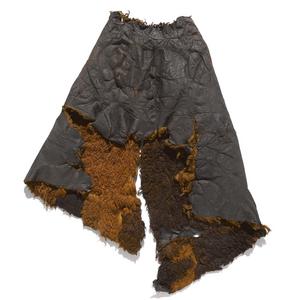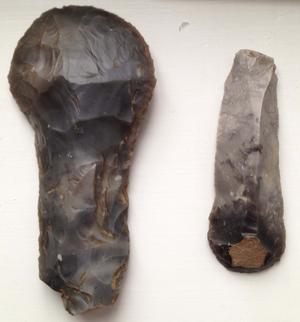
Fur in Prehistory
Without fur it was difficult to survive in the northern world. In the Stone Age, fur was crucial for survival.
Fur-bearing animals provided food, and warm, windproof and waterproof clothing. Stone Age man used many different tools to prepare the skins.
When Bronze Age people began to make clothes from textiles, they continued using their old patterns. Fur clothing was sewn to the same patterns for many centuries. Fur was also imitated in cloth.
In the Iron Age, skin capes and shoes were important items of clothing. 4-6 sheepskins were used for a cape. Cow and goat hides were used for clothing, as well as skins of wild animals, like wolf and deer. In the Iron Age, both men and women wore capes of fur.



